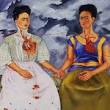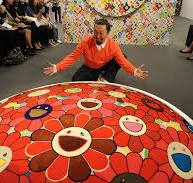The Artistic Legacy of Frida Kahlo
Frida Kahlo, a renowned Mexican artist, is celebrated for her unique and emotive artworks that continue to captivate audiences worldwide. Known for her self-portraits that depict her pain, passion, and resilience, Kahlo’s art transcends time and speaks to the universal human experience.
Life and Influence
Born in 1907 in Coyoacán, Mexico City, Frida Kahlo’s life was marked by physical suffering due to a severe bus accident she experienced as a teenager. This traumatic event shaped much of her artistic expression, as she channeled her pain and emotions into her paintings.
Kahlo’s art often explored themes of identity, gender, politics, and Mexican culture. Her vibrant use of color, intricate symbolism, and raw honesty set her apart as a trailblazer in the art world. She was unafraid to confront taboo subjects and challenge societal norms through her work.
Artistic Style
One of the defining features of Frida Kahlo’s art is her distinctive self-portraits. Through these powerful images, she bared her soul to the world, offering a glimpse into her innermost thoughts and feelings. Her use of surrealism combined with elements of Mexican folk art created a visual language that was uniquely hers.
Kahlo’s paintings often incorporated symbols such as monkeys, birds, flowers, and indigenous Mexican motifs that carried deep personal and cultural significance. Each brushstroke was imbued with emotion and meaning, inviting viewers to delve into the complexities of her psyche.
Legacy and Impact
Although Frida Kahlo’s life was marked by tragedy and hardship, her art remains a testament to the power of creativity as a means of healing and self-expression. Her unapologetic portrayal of pain and vulnerability has resonated with generations of artists and admirers who find solace in her work.
Kahlo’s influence extends far beyond the realm of art; she has become an icon for feminism, diversity, and individuality. Her legacy continues to inspire artists around the world to embrace their authentic selves and use their creativity as a tool for social change.
In Conclusion
Frida Kahlo’s art is more than just paintings on canvas; it is a reflection of the human spirit in all its complexity. Through her bold self-portraits and poignant imagery, she invites us to confront our own truths and embrace our vulnerabilities. As we immerse ourselves in the world of Frida Kahlo’s art, we are reminded that true beauty lies in authenticity.
Exploring the Depths of Frida Kahlo’s Art: 7 Reasons Her Work Continues to Captivate
- 1. Emotive self-portraits that reveal the artist’s innermost thoughts and emotions.
- 2. Unique blend of surrealism and Mexican folk art in her paintings.
- 3. Symbolic use of animals, plants, and cultural motifs to convey deeper meanings.
- 4. Raw honesty and unapologetic portrayal of pain, resilience, and identity.
- 5. Vibrant color palette that captures the essence of Mexican culture and tradition.
- 6. Influence on feminist art movements and advocacy for gender equality.
- 7. Enduring legacy as an icon for creativity, diversity, and individuality.
Challenges in Appreciating Frida Kahlo’s Art: Intensity, Symbolism, and Subject Focus
- Some viewers may find Frida Kahlo’s art too intense or emotionally overwhelming.
- The symbolism in Kahlo’s paintings can be complex and challenging to interpret for some audiences.
- Kahlo’s focus on personal suffering and physical pain may be off-putting to those seeking more uplifting or lighthearted art.
- Her frequent use of self-portraits may limit the variety of subjects explored in her artworks.
1. Emotive self-portraits that reveal the artist’s innermost thoughts and emotions.
Frida Kahlo’s art is characterized by her emotive self-portraits that serve as windows into her innermost thoughts and emotions. Through her paintings, Kahlo bared her soul with raw honesty, allowing viewers to witness the depths of her pain, passion, and resilience. Each brushstroke captured the complexities of her psyche, creating a powerful visual narrative that resonates on a deeply personal level. By revealing her vulnerabilities and inner turmoil through her self-portraits, Frida Kahlo invites us to empathize with her struggles and connect with the universal human experience of love, loss, and self-discovery.
2. Unique blend of surrealism and Mexican folk art in her paintings.
Frida Kahlo’s art is distinguished by her remarkable ability to fuse elements of surrealism with traditional Mexican folk art in her paintings. Through this unique blend, Kahlo created a visual language that was both deeply personal and culturally rich. Her use of dreamlike imagery and symbolic motifs drawn from Mexican culture added layers of meaning to her work, inviting viewers into a world that was at once familiar and fantastical. This distinctive artistic approach not only set Kahlo apart as a trailblazer in the art world but also showcased her talent for seamlessly intertwining different artistic traditions to create something wholly original and captivating.
3. Symbolic use of animals, plants, and cultural motifs to convey deeper meanings.
Frida Kahlo’s art is renowned for her symbolic use of animals, plants, and cultural motifs to convey deeper meanings within her works. Through the inclusion of monkeys, birds, flowers, and indigenous Mexican symbols in her paintings, Kahlo infused her art with layers of metaphorical significance. Each element represented a facet of her personal experiences, emotions, and cultural identity, adding richness and complexity to her compositions. By incorporating these symbolic elements, Kahlo invited viewers to explore the profound connections between nature, culture, and the human psyche in a way that transcended mere visual representation.
4. Raw honesty and unapologetic portrayal of pain, resilience, and identity.
Frida Kahlo’s art is characterized by its raw honesty and unapologetic portrayal of pain, resilience, and identity. Through her self-portraits and symbolic imagery, Kahlo fearlessly delved into her innermost emotions and experiences, laying bare the struggles and triumphs of her life. Her artworks serve as a powerful testament to the human capacity for resilience in the face of adversity, while also exploring themes of personal identity and cultural heritage with unwavering authenticity. Kahlo’s ability to confront her pain head-on and transform it into art has left a lasting impact on viewers, inspiring them to embrace their own vulnerabilities and find strength in their unique stories.
5. Vibrant color palette that captures the essence of Mexican culture and tradition.
Frida Kahlo’s art is characterized by a vibrant color palette that skillfully captures the essence of Mexican culture and tradition. Through her use of bold and vivid hues, Kahlo brings to life the rich tapestry of Mexican art, folklore, and heritage in her paintings. Each color choice is deliberate and evocative, reflecting the vibrancy and warmth of Mexican landscapes, traditions, and customs. This distinctive feature not only adds visual appeal to her artworks but also serves as a powerful homage to her roots and cultural identity, making her art a testament to the beauty and spirit of Mexico.
6. Influence on feminist art movements and advocacy for gender equality.
Frida Kahlo’s art has had a profound influence on feminist art movements and advocacy for gender equality. Through her powerful self-portraits and exploration of female identity, Kahlo challenged societal norms and paved the way for women artists to express themselves authentically. Her unapologetic embrace of her own experiences as a woman, including pain, strength, and vulnerability, resonated with feminist artists who sought to dismantle patriarchal structures in the art world. Kahlo’s work continues to inspire generations of artists to use their creativity as a tool for social change and to advocate for gender equality in all aspects of society.
7. Enduring legacy as an icon for creativity, diversity, and individuality.
Frida Kahlo’s enduring legacy as an icon for creativity, diversity, and individuality is a testament to the profound impact of her art on the world. Through her bold and unapologetic self-expression, Kahlo has inspired generations of artists and individuals to embrace their uniqueness and celebrate diversity. Her art serves as a powerful reminder that creativity knows no bounds and that true beauty lies in embracing one’s authentic self. Frida Kahlo’s influence as a cultural icon transcends time, continuing to resonate with people from all walks of life who find inspiration in her fearless pursuit of artistic truth and personal identity.
Some viewers may find Frida Kahlo’s art too intense or emotionally overwhelming.
Some viewers may find Frida Kahlo’s art too intense or emotionally overwhelming due to the raw and unfiltered emotions that permeate her work. Kahlo’s unflinching portrayal of pain, suffering, and vulnerability can be confronting for those who prefer art that is more lighthearted or detached. Her bold use of color, intricate symbolism, and deeply personal subject matter may evoke strong feelings in viewers, challenging them to confront their own emotions and experiences. While some may find her art difficult to engage with, others appreciate the honesty and depth that make Kahlo’s work a powerful reflection of the human condition.
The symbolism in Kahlo’s paintings can be complex and challenging to interpret for some audiences.
The intricate symbolism present in Frida Kahlo’s paintings can pose a challenge for certain audiences when it comes to interpretation. With layers of personal, cultural, and political references woven into her work, deciphering the deeper meanings behind Kahlo’s imagery requires a keen eye and an understanding of the context in which she created her art. The complexity of the symbols used by Kahlo adds depth and richness to her paintings, inviting viewers to engage with her work on a profound level that may require patience and contemplation to fully appreciate and comprehend.
Kahlo’s focus on personal suffering and physical pain may be off-putting to those seeking more uplifting or lighthearted art.
Some critics argue that Frida Kahlo’s intense focus on personal suffering and physical pain in her art may not resonate with those who prefer more uplifting or lighthearted artistic expressions. While Kahlo’s raw and emotive self-portraits delve deep into her inner turmoil and struggles, they can be perceived as too heavy or somber for audiences seeking art that offers escapism or joy. However, it is precisely this unapologetic honesty and vulnerability in Kahlo’s work that have made her a revered figure in the art world, challenging viewers to confront the complexities of human experience and find beauty in the depths of emotional authenticity.
Her frequent use of self-portraits may limit the variety of subjects explored in her artworks.
Frida Kahlo’s frequent use of self-portraits, while iconic and deeply personal, may indeed limit the scope of subjects explored in her artworks. By predominantly focusing on herself as the subject, Kahlo’s art may not fully delve into a broader range of themes and narratives that could have been expressed through different perspectives. While her self-portraits are powerful reflections of her inner world and struggles, they may overshadow potential explorations of external realities or societal issues that could have added more diversity to her body of work.





